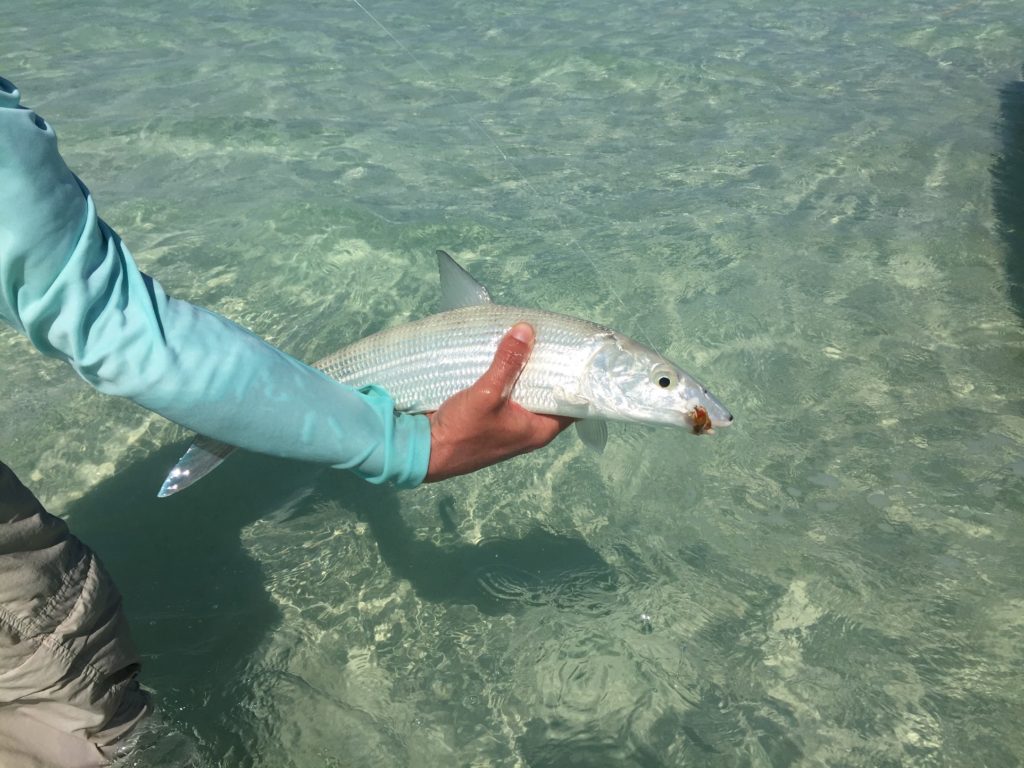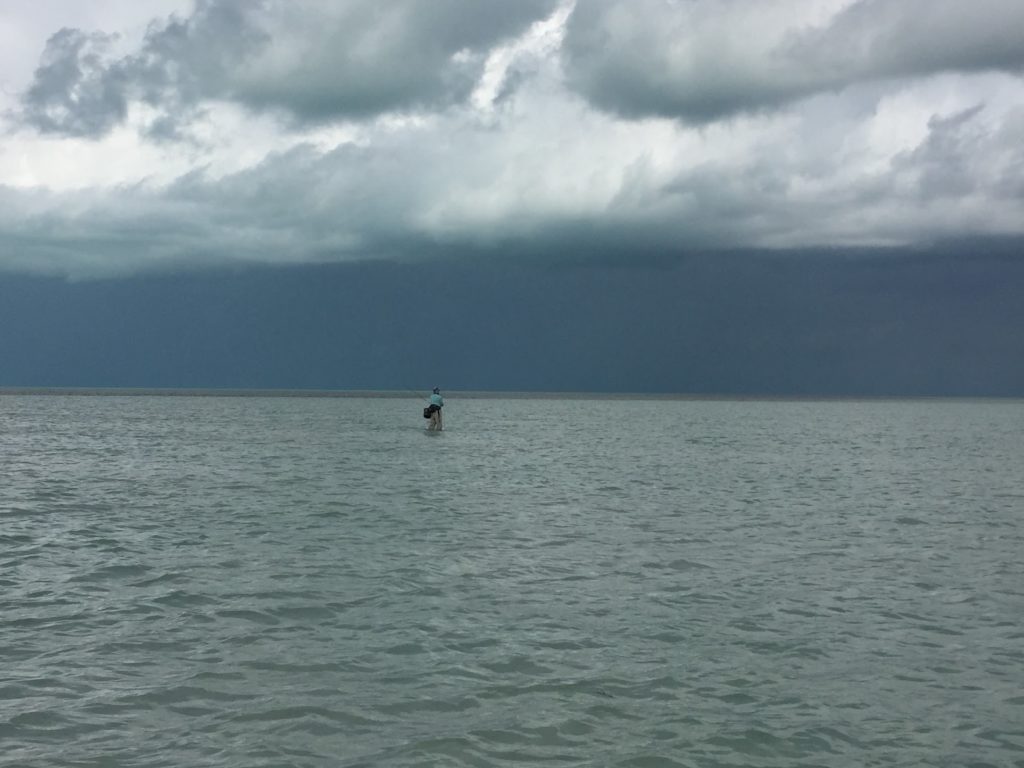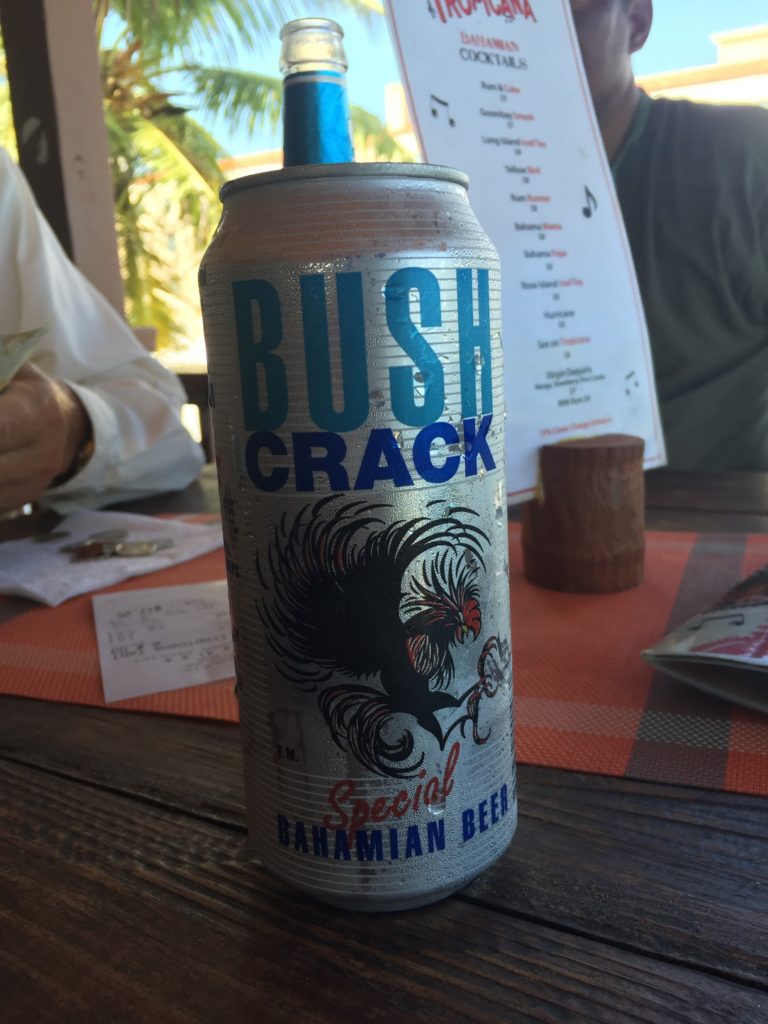Pop, Pop… Bonefish?!?
by Peter Schwartz
originally published in Tail Fly FIshing Magazine #21
Gotcha. Crazy Charlie. Bobble Head. Bitter. Merkin. All the traditional flies you would load into your fly box if you were about to hop on a boat to stalk bonefish, especially if you’re in the Bahamas. These are all proven flies that you will catch bones on. Such general patterns can be tied in various sizes, colors, materials and weighted as necessary based upon angler preference and need.
Now if I said Gurgler, Crease Fly, Top Dog (okay, not a fly but work with me here) you might think snook, redfish, stripers and blues, right? What if I said you could take these topwater patterns, swap them with your traditional bonefish flies and have legit shots at bones on the top? Crazy? Nope! More challenging and a ton of fun? You betcha!
I stumbled upon the topwater bonefish possibilities by accident. Fishing out of Andros, wrapping up a successful day wading the Joulters for bones I asked the guide if we could spend the last 30 minutes or so of the day to target cuda to try and put some meat in the cooler. Sorry readers, this is where I admit I always travel with at least one spinning rod. I can tell our guide is thinking something along the lines of “…sure this is going to be easy.” We motor to a probably not so secret spot on a rising tide with the sun slowly dipping in the western horizon. I pull out my 7’ travel spinning rod loaded with 30 lb. braid to a 50 lb. mono shock, finished off with a short strand of 60 lb. wire leader. The lure of choice this day is a Top Dog. This walk-the-dog lure measures in at 4 ¾” and weighs ¾ of an ounce; I replaced the rear treble hook with a single 3/0 stinger. Throwing down wind I can easy launch this thing 150’. It’s a great way to cover a lot of water since the splashing action and single large ball bearing in the middle of the hollow bait is a proven cuda catcher throughout the Caribbean. It didn’t take long to come tight, and soon a nice dinner sized fish of about twelve pounds was flopping in the box. Keep casting. Barracuda are a local table fare favorite. It’s a great way to win the heart of your guide, your driver, your bartender… and just about everyone else on the island.
As we drift with the wind toward the end of the key I notice my Top Dog is scaring up glass minnows. Great sign. Where there’s bait, there’s fish (or so I learned at Hank Paterson’s Fly Fishing School). I cast again. Again the bait sprays, but this time there are about four or so fish aggressively coming after my lure. Clearly not cuda. I’m thinking five-ish pound jacks. It’s pretty common not to get a hook-up when you get multiple jacks crashing your lure as they literally push each other out of the way to get what looks to them, a fantastic meal. I don’t come tight. Cast again, and again I’m getting the same hits. I slow my retrieve just a hair and THUG, got him! But something feels a little off. Everyone that has ever caught a jack, be it a crevalle, horse eye, or even a blue runner recognize that distinctive jack “thump, thump, thump” as they turn sideways and use their body and tail to put up an impressive fight. Instead my rod holds a nice steady arc and the line comes off my reel smoothly, I’m definitely a little confused. Could it be a bonefish? As I play the fish closer to the skiff I see the silver flash and to the shock of everyone on board, there it is; a 6 ¾ pound bonefish, with a Top Dog and all the hardware hanging out of his mouth. So much for them being leader shy. And this event, as cool as it was, got me thinking… could one target bonefish with the long rod using topwater flies? Well, I decided right then and there that I was going to find out during the week.
My first challenge was overcoming the fact I didn’t bring too many topwater flies on this trip. Why would I? After rummaging through my gear and my buddy’s fly boxes I was able to find a small crease fly, and a few shrimp gurglers that looked especially perfect. All these flies were immediately moved to my easy access box and it was just a matter of time before I would put these guys to use.

Two days later on an incoming tide, I could see shrimp popping out of the water with bones in fast pursuit. If there was ever a time to try and catch some of these fish on gurglers, this was it. After a quick fly change it only took about two casts to get some fish interested in my floating foam fly. My first instinct was to fish the fly slowly. With their inferior mouth, my gut was saying a fast retrieve would result in a lot of splashing but no bent rod. But what I found, at least in this situation, was that slow wasn’t working. They wanted it fast, just like the shrimp they were on. It was fantastic fun. I quickly yelled at my fishing partner who was wading about 150 feet away to put on a gurgler as well. Our roaring laughter with all the fun we were having could probably be heard back in town. Our guide probably thought we thought we were high on something other than two-and-a-half pound bones. An unbelievable end to the day.
During the rest of the week we continued to opportunistically catch bones on the few gurglers we had. We started to put two and two together in regards to when the topwater approach worked best. We noticed that on ankle deep tides there just wasn’t enough depth for them to get their mouths up out of the water and suck down the fly. On high tides, when the fish would group up, they didn’t seem interested. It was the in-between water depths where the approach worked best. No surprise that when we saw shrimp or small minnows in the area it was almost too easy. At the end of a great trip my immediate thoughts went to which topwater flies could I find or tie that would increase the opportunity to catch bones off the surface. I would have to wait 51 weeks to find out.
Near the end of September 2015 a tropical depression named Joaquin had been forming roughly 1,000 miles east of Andros and NOAA was forecasting it to increase in strength. However, its predicted track was shown meandering harmlessly out at sea. No big deal, or so I thought as I was packing up on the evening of September 29th. Oh, how things change. By mid-morning of the 30th the entire Bahamas was under a Tropical Storm Warning, not too many hours later the eastern islands were under a Hurricane Warning. Fortunately, we were able to get to Andros on that last day of September without any issues, and our charter flight to the island was smooth and quick. Believe it or not we fished our entire trip, including October 1st and 2nd under a Hurricane Watch (a first for me). The strong west winds kept the outer bands of Joaquin east of us the entire time. Unfortunately, we still experienced incredibly high water during our expedition, as the storm surge flooded even the western most Bahamian flats. It’s moments like this where you need to put a fishing trip into perspective. It could have been way worse had our destination been Acklins or Crooked Island – both got hammered. If our only complaint was “high water”, I would call it a successful endeavor in the grand scheme of things. And at the end of the day there was more than enough Kaliks, Bush Crack and rum for the five friends to make a tough fishing trip into a great vacation.

To be honest, the fly fishing during the week was pretty poor (on the plus side the high water made for fantastic barracuda fishing and we ate great). But that didn’t mean we didn’t catch fish, nor did it mean that I didn’t have the opportunity to target bones on some of those gurglers I brought over.
Taking what I learned from a year earlier, I applied my homeschooling this time around with increased confidence. Unlike last year I didn’t see much bait on the flats, so I changed my approach a bit. I went with larger shrimp gurglers (see picture), led the fish quite a bit and allowed some slight pauses in between popping it to entice bites. Watching a single fish rise from the small pack he was traveling with to take my fly off the surface was just what I needed to take the sting out of the challenging fishing conditions we had all week. It also proved to me that the previous year’s topwater bonefish experience was no fluke.

Although I am by no means an expert in the topwater bonefish strategy, I’m more than happy to share what I have learned over the last couple of years. Use only mono leader (as most of you know fluro sinks) without tippet as gurglers are not exactly the best flies to cast in wind. The shorter your leader, the easier it is. I have found you only need about 8’. Loop knots definitely improve the action of the fly. I would recommend spending the extra seconds in this regard. Size of flies doesn’t seem to be as important as one might think. I had success with flies on hook sizes between 1s and 4s, when they want to eat… they seem to eat! Match the “hatch” definitely helps. If you see minnows in the area small crease flies or gurglers that are tied in a minnow like pattern will likely up your odds. No baitfish, then go with a shrimp pattern – I know of no flats fish that don’t like a shrimp.
So the next time you are about to head to the Caribbean, throw in some non-traditional flies… you just never know.


